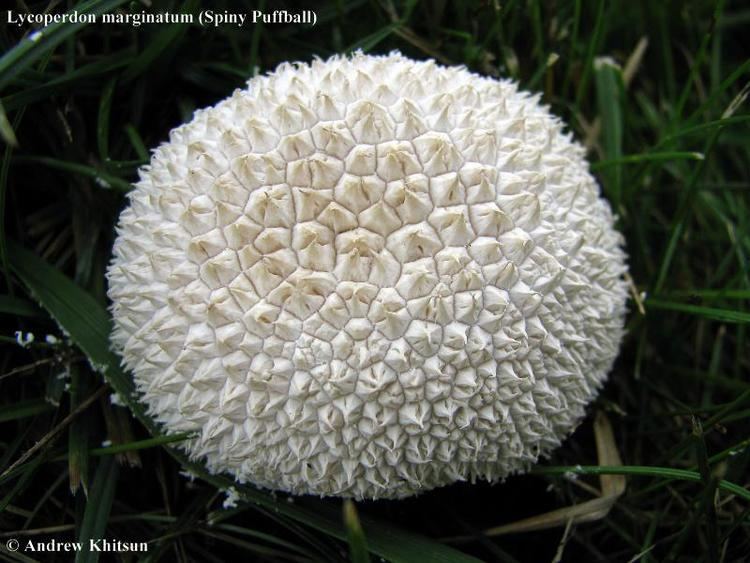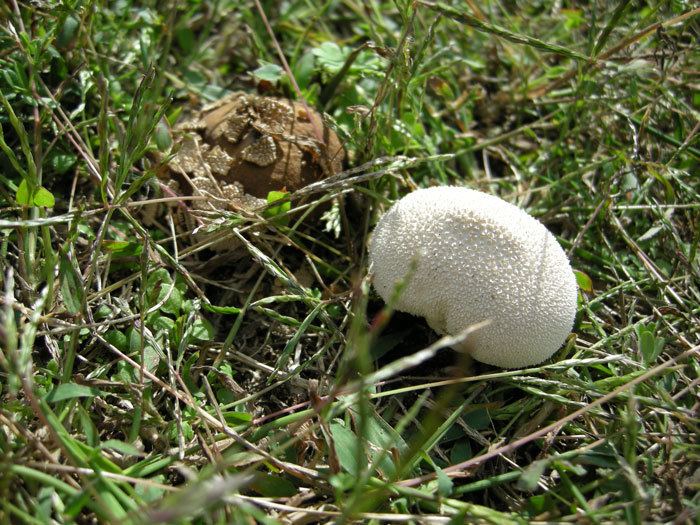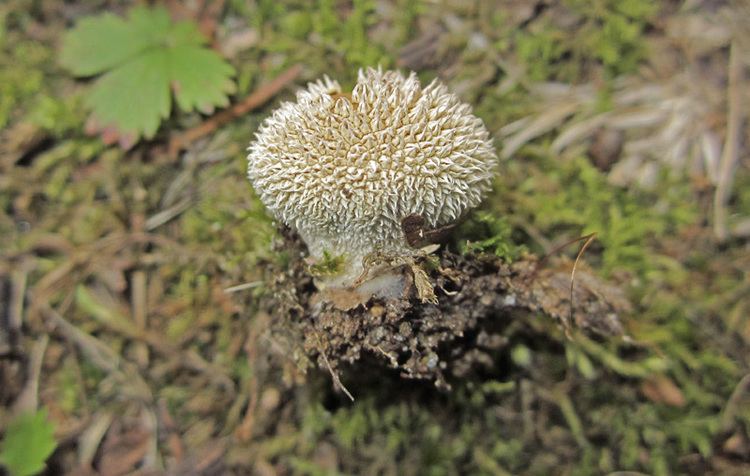Kingdom Fungi Class Agaricomycetes Family Agaricaceae Rank Species | Division Basidiomycota Order Agaricales | |
 | ||
Similar Lycoperdon curtisii, Lycoperdon nigrescens, Lycoperdon molle, Bovista dermoxantha, Lycoperdon umbrinum | ||
Lycoperdon marginatum
Lycoperdon marginatum, commonly known as the peeling puffball, is a type of puffball mushroom in the genus Lycoperdon. A common species, it is found in Europe and North America, where it grows on the ground. It is characterized by the way that the spiny outer layer peels off in sheets.
Contents
- Lycoperdon marginatum
- Lycoperdon marginatum fungi kingdom
- Taxonomy
- Description
- Habitat and distribution
- References

Lycoperdon marginatum fungi kingdom
Taxonomy

The species was first described scientifically in 1839 by Vittadini. Molecular analysis places it the species in the subgenus Lycoperdon of the genus Lycoperdon, along with L. perlatum and L. norvegicum.
It is commonly known as the peeling puffball.
Description

The fruit bodies of Lycoperdon marginatum are roughly spherical when young, becoming flattened and more pear-shaped in maturity, and have dimensions of 1–5 cm (0.4–2.0 in) wide. A short, tapering stalk holds the fruit body. Initially white, the surface of the peridium (spore case) is densely covered with short spines; the spines eventually fall off in irregular sheets, exposing the smooth, brown underlying surface. Mature fruit bodies form a small opening at the top through which spores are released. The internal spore-bearing tissue, the gleba, is initially white and firm, but becomes greenish-brown and then greyish-brown and powdery at the mushroom matures. The spores are spherical, covered with minute warts, and measure 3.5–4.5 μm. It has yellowish-brown capillitium threads that have a few pores or septa, and measure 6–7 μm wide.

The edibility of the puffball is not known with certainty, and there have been conflicting reports in this regard, with some listing it as safe to eat, and others described it as poisonous. The species is used in Mexico to produce auditory hallucinations, although chemical analysis of fruit bodies as not revealed the presence of any substances that would cause this effect.

Lycoperdon echinatum is similar is appearance, but its spines do not break off in sheets. The exoperidium of L. rimulatum sometimes peels off in sheets, but it does not have spines on its surface.
Habitat and distribution

The puffball is saprobic, and grows on the ground singly, scattered, or in groups. A fairly common species, it is often found on sandy soil, in nutrient-poor locations, or in oak-pine woods, where it fruits between June and December. It is found in Australia, Europe and North & South America.
The puffball was featured on a postage stamp from the Ascension Islands in 1983.
